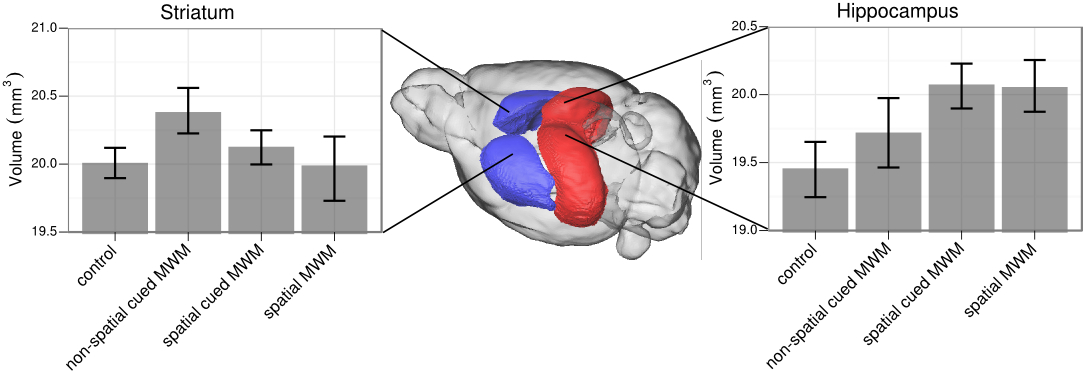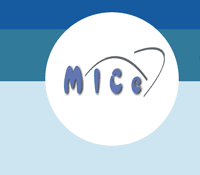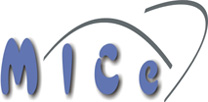MRI of Learning and Memory
Brain imaging has made tremendous advances in identifying which areas of the brain are active during a given task. The longer term implications of learning and memory on the brain have, however, remained elusive. There are cellular changes that are known to occur in the learning process whose aggregate could produce a local volume displacement that can be captured with imaging. A recent study by our group set out to test for this phenomenon using Magnetic Resonance Imaging (MRI) in mice; we indeed were able to detect subtle brain volume changes when the mice learned to navigate a maze. The changes seen on MRI were cognitively specific, with the hippocampus growing in the spatial version of the maze and the striatum becoming enlarged in the non-spatial version, and colocalized with modulation of neuronal processes. Our goals now are to understand the cellular origins of how the brain changes with learning, to identify the best imaging and image processing techniques to capture brain plasticity, and to assess how aberrant plasticity is a factor in disease.

|
Mice were trained on one of three versions of the Morris Water Maze (MWM) for five days. In the non-spatial cued MWM group the platform was marked with a flag; in the spatial MWM group the platform was hidden and the mice had to use distal landmarks to find the escape platform, and the spatial cued MWM group could use both distal landmarks as well as the flagged platform to solve the maze. Structure volumes were then measured with MRI, showing that the volume of the striatum increased in the non-spatial cued MWM group whereas the volume of the hippocampus increased in the two groups of mice that could use distal landmarks to navigate to the platform. |
Research is funded by the Canadian Institutes of Health Research




